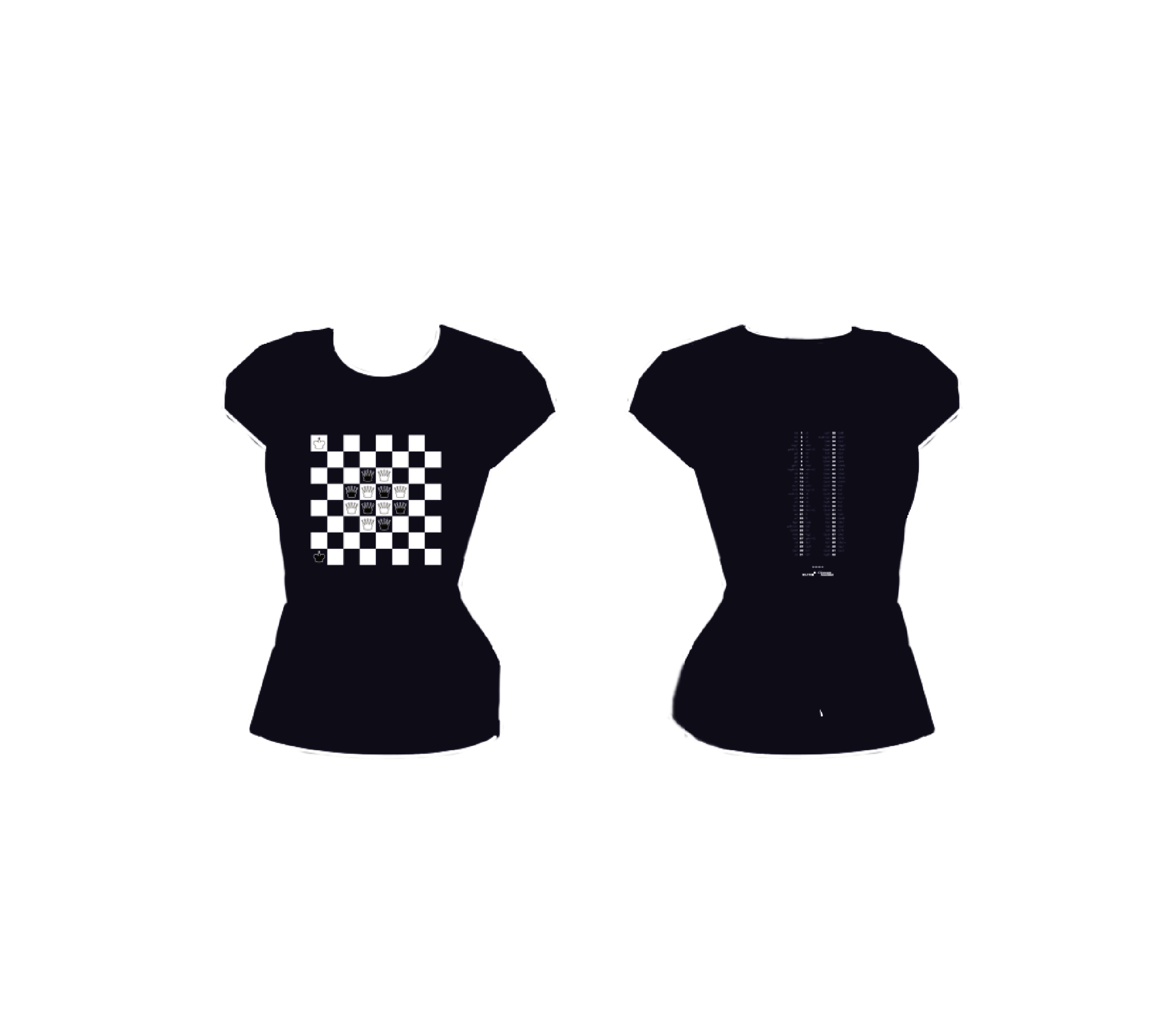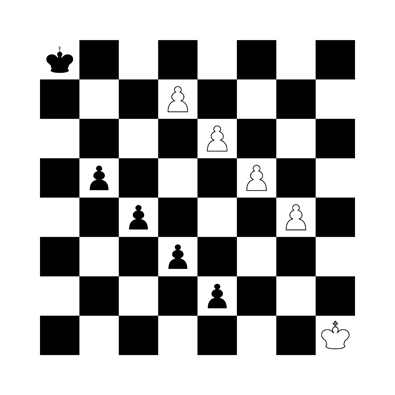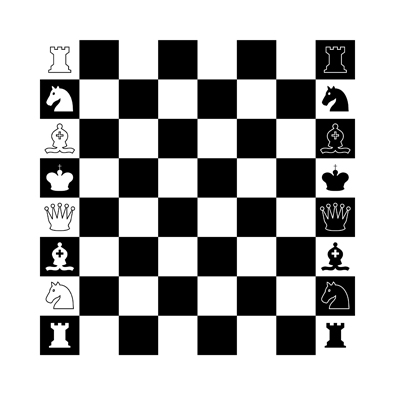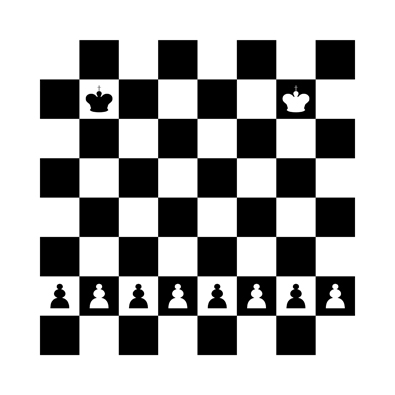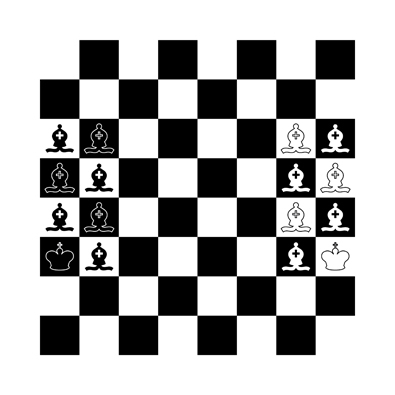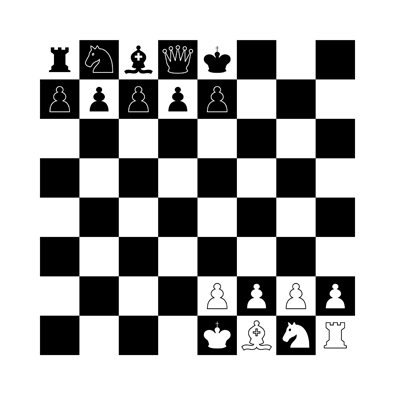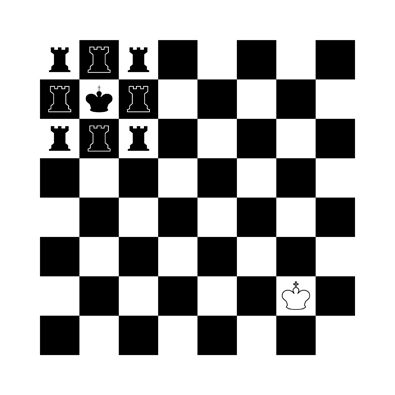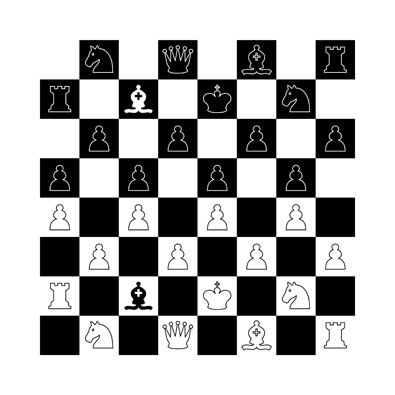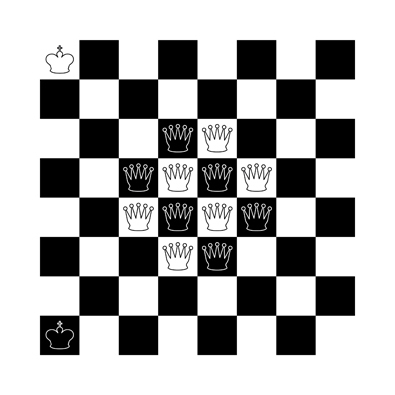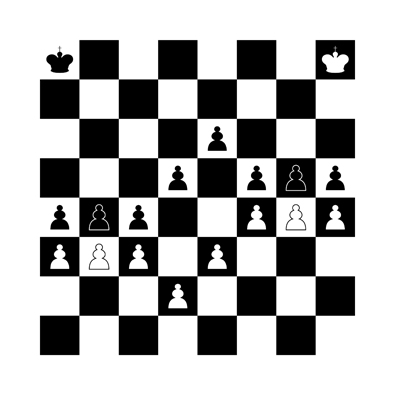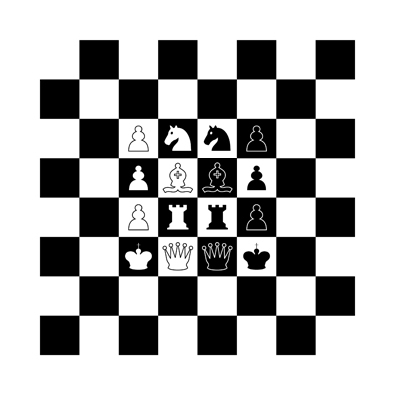
|
c4 b4 bxc5 f4 f5 d4 Bf4 d5 dxc6 g4 Bg2 Bd5 Nc3 Nb5 Nd6+ Qa4 Rd1 Qxa7 Qxa8 Rd4 |
1 2 3 4 5 6 7 8 9 10 11 12 13 14 15 16 17 18 19 20 |
f6 c5 g5 e6 exf5 Nc6 gxf4 Bd6 Be5 Ne7 Ng6 Nf8 Ne6 Rg8 Kf8 Rxg4 Kg7 Kg6 Kg5 Rxg1+ |
Kd2 Kc3 Qxc8 Qxb7 Qxd7 Qxh7 Qh3 Qd3 Kc2 Kc3 Kc2 Kc3 |
21 22 23 24 25 26 27 28 29 30 31 32 |
Rxh1 Rxh2 Qe8 Rxe2 Rxa2 Re2 Re4 Qh5 Qf3 Qe3 Kg4 Kf3 |
